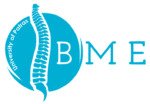| Course Title: |
MODELING & MIXED REALITY IN HEALTH |
|---|---|
| Code: |
EPE_001 |
| Semester: | Spring |
| Weekly teaching hours | CREDITS (ECTS) | |
|---|---|---|
| Lecture: | 1 | 2.5 |
| Laboratory: | 1 | 2.5 |
SYLLABUS |
| The purpose of the course is to familiarize with issues related to the development, modeling and simulation of human neuromusculoskeletal dynamic systems for the analysis of different motor activities. Within these lectures the student will understand what is a dynamic system, how to model, how the simulation is conducted and how these techniques can be used to solve biomedical related problems in the study of human movement.
There will be an introduction to basic concepts of physics, dynamical systems, state space representation, control, numerical integration and transformations. Basic robotics concepts will be used to model and derive the equation of motion of the skeletal system, which will be the basis for understanding and modeling the motion of the human neuromusculoskeletal system. Finally, different simulation algorithms will be studied (forward and inverse), that are constantly used and applied by the biomechanical community. As part of the lectures there will be an extensive discussion on classical work in the area and the student will be entrusted with the study of selected publications. The laboratories are consistent with the understanding of the material, while solving practical applications. Intermediate assignments will be presented at the end of the courses to help in understanding the material.Theoretical classes: There will be an introduction to basic concepts of physics, dynamical systems, state space representation, control, numerical integration and transformations. Basic robotics concepts will be used to model and derive the equation of motion of the skeletal system, which will be the basis for understanding and modeling the motion of the human neuromusculoskeletal system. Finally, different simulation algorithms will be studied (forward and inverse), that are constantly used and applied by the biomechanical community. As part of the lectures there will be an extensive discussion on classical work in the area and the student will be entrusted with the study of selected publications. Practical classes: The laboratories are consistent with the understanding of the material, while solving practical applications. Intermediate assignments will be presented at the end of the theoretical class to help in understanding the material |
Learning outcomes |
|
General Competences |
|
